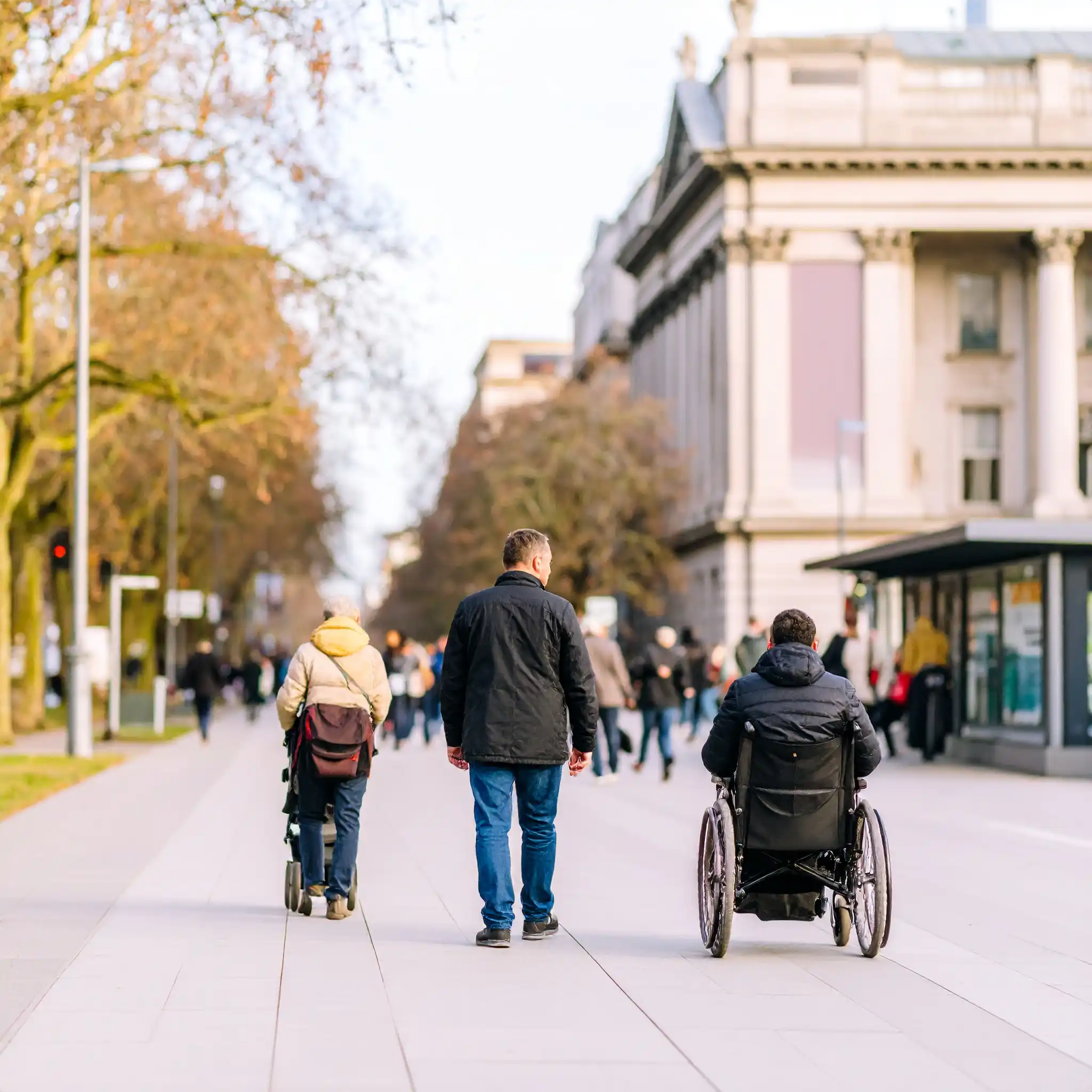For lots of us, public transport is just part of daily life—how we get to work, meet up with friends, or run errands. But if you use a wheelchair or you’re out and about with a baby in a stroller, catching the bus, metro, or tram can come with its own set of challenges that can cause frustrations. In this first post of our accessibility series, you can find everyday tips and real-life advice to help make your ride a bit easier—whether you’re rolling solo or pushing a little one in tow.
In this guide, we’ll share practical tips to help wheelchair users and stroller-toting parents travel with confidence.
1. Research Accessibility Options Before You Go
Not all public transport systems are created equal when it comes to accessibility. Before heading out:
- Check the transit provider’s website for accessibility features (elevators, ramps, priority seating).
- Look for real-time updates on elevator or ramp outages (common in older subway systems).
- Use apps like Google Maps (with wheelchair-accessible routes) or local transit apps that highlight step-free access.
2. Look for Universal Design Features
Cities are slowly becoming more inclusive, and looking out for universal design features can make a big difference:
- Curb cuts and ramps: Smooth transitions at corners and building entrances are essential for both wheelchair users and strollers.
- Wide doorways and automatic doors: These are game changers, especially if you’re navigating with one hand on the stroller or pushing a manual wheelchair.
- Elevators with tactile buttons and audio announcements: For people with multiple needs (e.g., mobility and visual), these features offer both independence and security.
3. Tips for Using Public Transport
- Buses: Most modern buses have a deployable ramp and designated wheelchair/stroller spaces. Politely ask the driver if assistance is needed—drivers are usually trained to help.
- Trains and metro: Always look for stations labeled “accessible” or “step-free.” Elevators or low-level platforms can make boarding manageable.
- Priority spaces: Use these respectfully, but don’t feel guilty for occupying space you need. If you’re using a stroller, be mindful of wheelchair users needing access to those same spots.
4. Managing Crowds and Peak Hours
Public transport can get hectic during rush hour. To make your trip easier:
- Travel during off-peak times if possible (mid-morning or early afternoon). If that’s not an option, try to figure out when there are stretches with more trains or buses running back to back, so you’ll have a better chance of finding some space and getting on more comfortably.
- Position yourself near accessible doors to avoid last-minute struggles.
- Stay visible—drivers and staff are more likely to notice and assist if you’re near the front.
5. When Things Don’t Go as Planned
It’s frustrating when accessibility features are missing or broken—but there are ways to cope:
- Ask for help: Don’t hesitate to ask someone to assist with a heavy door or awkward curb.
- Speak up: Leave reviews or feedback when a business or space isn’t accessible. It raises awareness and encourages improvement.
- Celebrate progress: On the flip side, it’s also great to praise places doing it right—accessible toilets, friendly staff, and welcoming entryways deserve recognition.
6 Know Your Rights
Many countries have laws protecting accessible transit:
- The Americans with Disabilities Act (ADA) in the U.S. mandates accessible public transport.
- The Equality Act in the UK requires operators to make reasonable adjustments.
- If you face discrimination or accessibility issues, report it to the transit authority.
You’re not alone. There are growing online and offline communities advocating for better accessibility. Sharing experiences, tagging cities or businesses in social media posts, and joining local forums can amplify your voice.
7. Getting Ready for the Unexpected
Even with the best planning, surprises happen—an elevator might be out of service, a ramp blocked, or a route suddenly inaccessible. Being prepared can help you stay calm and flexible.
- Pack smart: Bring snacks, water, wipes, a phone charger, and small repair tools if needed.
- Know your backups: Check for alternate routes, entrances, or nearby accessible spots.
- Don’t hesitate to ask: Most people are willing to help if you let them know what you need.
- Stay flexible: A short delay or detour doesn’t have to ruin your day. Take a deep breath and adjust.
Every outing builds confidence. The more you adapt, the more resilient and prepared you become.
Public transport should be accessible to everyone, but until infrastructure catches up, preparation is key. By researching routes, knowing your rights, and speaking up when needed, wheelchair users and parents with strollers can navigate transit more smoothly. Remember, each of our city guides includes a dedicated section with all the essential information about accessibility options in every city.


